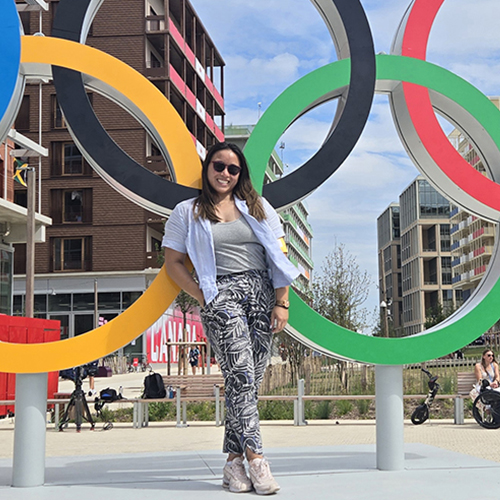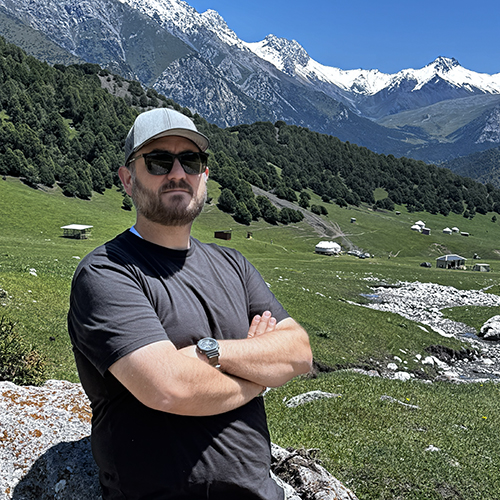Students expecting to listen passively as Scott Freeman lectures in Biology 180, a large introductory course, are in for a surprise. While Freeman’s job title is principal lecturer in the Department of Biology, he rarely lectures. Even when his classes have 700 students, he expects—in fact, requires—every student to participate.
Freeman’s not alone. The Department of Biology has integrated active learning, which involves discussion and problem-solving, into most of its large introductory classes. This approach has led to such a dramatic improvement in student performance that the department plans to use active learning in all of its introductory biology courses as of Autumn Quarter 2014. About 2,900 students enroll in these courses each year.
The basic idea behind active learning is that students actively engage with the material they’re studying, delving more deeply by working on problems or discussing questions in groups during class. Freeman first experimented with active learning in large lecture classes in 2005, using wireless clickers—new technology at the time—that allowed each student to answer multiple-choice questions. The approach kept students on their toes and helped Freeman see where content needed further clarification.

Soon Freeman was looking into other active learning techniques, including having students complete a quiz about their required reading the night before class, freeing up class time for more nuanced discussion. “The old view was that the lecturer would explain the textbook in class,” says Freeman. “I say, ‘If you need to explain a textbook, get a better textbook.’”
Freeman now also reserves class time for students to work in small groups, usually with their lab section classmates and teaching assistant, which creates a small class environment within a large class. “The most inspiring comment I’ve ever gotten on a teaching evaluation was that I made a class of 700 feel like a class of 35,” says Freeman.

There is one active learning technique that Freeman was hesitant to adopt: randomly calling on students to answer questions. He feared it would make students nervous and compromise the class’s positive atmosphere. But colleagues at other institutions had success with random calling, so he decided to give it a try. Now he’s a believer. “On the course evaluation, I asked students what they thought of random calling,” says Freeman. "Almost all the students said, ‘I hated it, but make sure you use it all the time. I’ve never been so alert.’”
Today Freeman continues to refine his active learning techniques. “My goal is to have whole class sessions where nothing is a declarative sentence, everything is a question,” he says.
Every time Freeman tries something new in class, he studies its effectiveness, reviewing the data before deciding how to proceed. Some data are breathtaking. Nationally, only about 65 percent of students pass their STEM (science, technology, engineering, mathematics) courses, but that rate rises to 78 percent with the introduction of some active learning. In Freeman’s classes, where active learning is used regularly and strategically, the success rate skyrockets to 90 percent. Data also show that the improvement is particularly striking among students from disadvantaged backgrounds. “Active learning seems to have a disproportionate benefit for them,” says Freeman. “It really closes the achievement gap.”
The most inspiring comment I’ve ever gotten on a teaching evaluation was that I made a class of 700 feel like a class of 35.
It was this compelling data that convinced the Biology Department to integrate active learning into all introductory biology courses. “We have a commitment to provide the best quality education we can,” says Toby Bradshaw, chair of the Department of Biology. “We are not using active learning for active learning’s sake. It’s based on evidence that these methods have improved student outcomes. We see this as a long-term commitment.”
A couple of developments have made this approach possible. The number of UW biology majors has skyrocketed in recent years—the department now has more than 1,700 declared majors, the most of any department at the UW by a wide margin—and enrollment in biology courses has increased by nearly 50 percent since 2007. As new upper-level lab courses have been added to address bottlenecks, faculty previously teaching introductory courses have been assigned to upper-level courses in their area of specialization. That created an opportunity to hire an additional lecturer—someone with a commitment to active learning—for the final course in the introductory three-course sequence.
The new lecturer, Jennifer Doherty, will begin Autumn Quarter 2014, co-teaching Biology 220 with principal lecturer Mary Pat Wenderoth, who will also serve as Doherty’s mentor. Wenderoth and Scott Freeman are both past recipients of the UW Distinguished Teaching Award.

“To do active learning, you have to have the right mindset,” says Freeman. “Then, like anything, it’s a combination of aptitude and experience. You need to not be afraid to fail. Lecturing is more comfortable, because that’s how we learned. This is a lot harder. You have to be willing to try something new and fall on your face and learn from it and get better.“
Given the improvement in student performance with active learning, an increasing number of faculty are up for the challenge. The implications extend beyond a single classroom and even beyond the UW to the entire field of biology.
“By reducing the failure rates, capable students are able to go on rather than being washed out of the system because they came in a bit underprepared and no one was willing to change the way they did things to help them out,” says Bradshaw. “The impact down the road is that we will have a larger, more diverse, more capable work force in the life sciences. That’s a really good thing.”
For more about research on the effectiveness of active learning, check out the UW Today story describing a paper published in the Proceedings of the National Academy of Sciences, on which Scott Freeman is lead author.
More Stories

A Sports Obsession Inspires a Career
Thuc Nhi Nguyen got her start the UW Daily. Now she's a sports reporter for Los Angeles Times, writing about the Lakers and the Olympics.

Through Soil Science, an Adventure in Kyrgyzstan
Chemistry PhD alum Jonathan Cox spent most of 2025 in Kyrgyzstan, helping farmers improve their soil—and their crops—through soil testing.

A "gesture" to jump-start careers
To prepare students for professional success, the UW College of Arts and Sciences offers “gesture,” a mock startup company where student interns gain skills that employers seek.